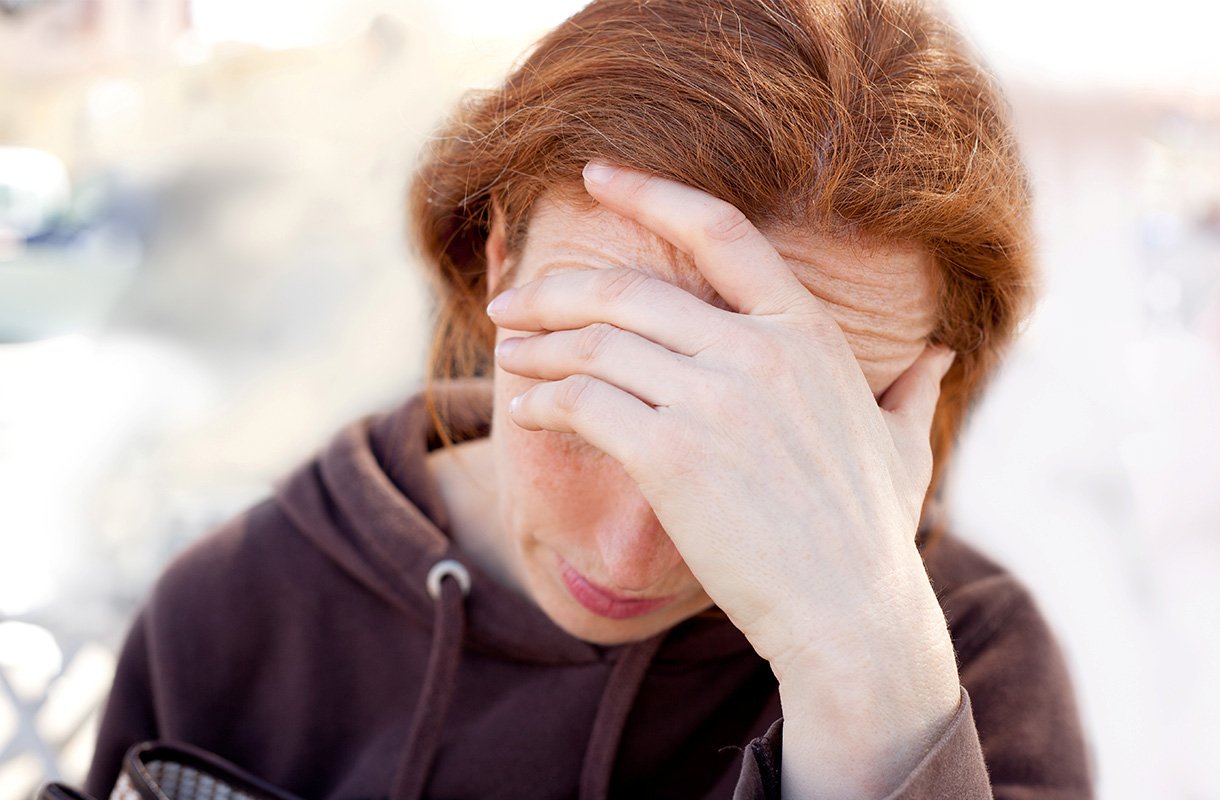An itchy scalp is a widespread symptom that brings many patients in for a consultation. Itch or pruritus is an uncomfortable tingling or uneasy sensation associated with a desire to scratch. Ranging from mild annoyance to an uncontrollable, disabling condition, scalp itch is a significant and distressing symptom of different cutaneous and systemic diseases. There are many reasons for itching, and details can get confusing, so this information serves as a reference for those struggling with scalp itch and searching for answers. This information was taken from “Scalp Itch: A Systematic Review” by Drs Vazquez-Herrera, Sharma, Aleid and Tosti from the Skin Appendage Disorder Journal 2018*.
Background
Scalp skin is different from other body parts, having a tremendous sensory nerve supply from branches of the nervous system responsible for sending pain, touch, and temperature sensations from your face to your brain. It also contains more hair follicles, more sebaceous glands, and has specific normal flora, resulting in vulnerability to certain dermatological problems.
Initially, when approaching scalp itch, it is a good rule of thumb to first think about clinical signs of the most common causes of scalp itch and then rule out other, less common disorders. The explanation is often related to one of these most common causes of scalp itch, which can be remembered by SCALLP.

Use the five steps for scalp evaluation (listen, look, touch, magnify, and sample).

To help classify and diagnose the issue, we look for two types of scalp itch:
1. Scalp itch with primary dermatological lesions
A skin lesion is any type of abnormal lump, bump, rash, blister, sore or ulcer, and any crusty, scaly, or discolored areas on the skin.
To help identify the underlying disease(s), lesions are organized based on:
- itching with scaling/erythema (flaking and redness)
- itching with alopecic patches (hairless patches)
- itching with urticarial lesions (hives)
- itching with infestations (lice)
- itching with other symptoms
Primary skin lesions develop as a direct result of the disease process. But secondary lesions due to scratching, like crusts and lichen simplex chronicus (a localized area of thickened skin resulting from repeated rubbing, itching, and scratching of the skin) can develop and be present as well.
It is also very important to remember that scalp itch may be associated with more than one disorder, and more than one type of lesion may present. So, depending on the type of lesion present, we can use a clinical approach to differentiate between two or more conditions that could be behind a person's symptoms.
2. Scalp itch without primary dermatological lesions
Based on the possible underlying disease, this scalp itch can be classified as systemic, neuropathic, and psychogenic.
- The presence or absence of hair loss may also help with the diagnosis.
Below is a great summary of scalp pruritis causes with and without skin lesions.
Brief Overview: Causes of Dermatologic Scalp Itch With Skin Lesions
Scalp Itch with Scaling/Erythema
Scalp itch associated with scaly patches, red skin, and stubborn dandruff between follicles (interfollicular scales) and tissue surrounding a follicle (perifollicular scales) and/or superficial reddening of the skin, as a result of irritation causing dilatation of the blood capillaries (erythema) can be caused by:
Seborrheic Dermatitis (one of the most common causes of itch)
Affects approximately 16% of adult population. In one study, 50% of affected patients complained of scalp itch. Other common symptoms included sensations of prickling, tightness, pain, and burning. Itching in seborrheic dermatitis typically disappears or decreases in severity after shampooing.
Psoriasis (one of the most common causes of itch)
Itch is present in 67–97% of patients with psoriasis, and there is a correlation between the severity of lesions in scalp psoriasis and the severity of itch. The characteristics of itch are varying: Most patients have periodic itch, with the most essential exacerbating factors being stress and temperature. Scalp psoriasis commonly causes increased hair shedding, and psoriatic alopecia may be present in severe cases.
Contact Dermatitis (one of the most common causes of itch)
Clinically, it may present with itch, erythema, and scaling. Contact dermatitis often complicates other scalp disorders, as an interrupted skin barrier can usher sensitization. The most common scalp sensitizers are hair dyes, fragrances, and preservatives - typical ingredients in shampoos, conditioners, and hair styling products. Also important to consider is the type of brush used since contact dermatitis is associated with nickel, rubber, or plastic.
Red Scalp Syndrome
Red scalp is characterized by scalp erythema (redness) associated with papules, pustules, and dilated or broken blood vessels near the skin's surface. Patients complain of itching, stinging, and burning. The disorder is considered a form of rosacea localized to the scalp and may be associated with androgenetic alopecia. Red scalp is characteristically resistant to treatment with topical steroids but responds to oral tetracyclines.
Tinea Capitis or Ringworm of the Scalp
Ringworm of the scalp may cause severe itching, erythema or redness, and scaling: alopecia may or may not be present. When considering this diagnosis, we look into family history, school contacts, history of contact with pets with skin lesions, and the presence of tinea or fungal infection of the skin in other body parts of the patient and its family.
Dermatomyositis
Dermatomyositis is an uncommon inflammatory disease marked by muscle weakness and a distinctive skin rash linking to scalp itch in up to 94% of diagnosed patients. Other scalp symptoms that may be present are erythema, atrophy or small indentations or depressions in the skin, scales, and diffuse non-scarring alopecia. Acute telogen effluvium may also occur, diagnosed by history and a positive pull test. The patient may also have proximal muscle weakness, heliotrope rash, mechanical hands, and photosensitivity.
Sensitive Scalp/Atopic Dermatitis
Atopic Dermatitis is a common condition that may be related to other scalp diseases such as seborrheic dermatitis, psoriasis, and contact dermatitis. When exposed to physical, psychological, or hormonal factors, the scalp is prone to experiencing itch, including prickling, burning, and tingling (paresthesia). An altered skin barrier has been described but not linked to a specific immune or allergic mechanism. Itch is present in 60% of patients with a sensitive scalp, and hair loss has also been associated with scalp sensitivity. The scalp is affected in 49.7% of patients with atopic dermatitis, and scalp itch is one of the minor diagnostic criteria.
Scalp Itch with Alopecic Patches
Scalp Itch with Alopecic (no hair) Patches requires distinguishing between non-scarring and scarring alopecias.
Non-Scarring Alopecia: Hair follicles are preserved with potential for hair regrowth.
Non-scarring alopecias associated with scalp itch include alopecia areata and androgenetic alopecia. Patients with active alopecia areata often complain of mild itching or burning, which usually comes before developing new patches. It may be caused by mast cell release of histamine and tryptase and lymphocytic infiltration with the release of IL-31.
Patients with androgenetic alopecia often complain of scalp itch and frequently have naturally occurring seborrheic dermatitis. In active telogen effluvium, patients very often complain of trichodynia or a painful sensation in the skin of the scalp or the hair rather than scalp itch. Trichodynia is almost exclusive to active telogen effluvium and is very seldom found in pure androgenetic alopecia.
Scarring Alopecia: The hair follicle is irreversibly destroyed due to destruction of stem cells in the bulge area of the outer root sheath, and replaced by fibrous scar tissue, leading to permanent hair loss.
The most common types of scarring alopecia associated with itch are frontal fibrosing alopecia, discoid lupus erythematosus, central cicatricial centrifugal alopecia, and lichen planopilarus.
Lichen Planopilarus (one of the most common causes of itch)
Lichen planopilaris (LPP) affects the scalp and hair. It is a form of lichen planus, an inflammatory condition affecting the skin and mucous membranes, but results in patchy progressive, permanent hair loss mainly on the scalp. Symptoms may include scaly skin and redness around hair follicles, bald patches, and pain, burning, or itching on the scalp.
Scalp Itch with Urticarial Lesions (Hives)
Hives have a raised central white wheal surrounded by an erythematous halo. The lesions are typically rounded, circumscribed, and usually connected with contact urticaria, urticarial vasculitis, and insect bites. Because of the scalp’s skin structure, patients complain of irritation, itching, stinging, or burning of the scalp with scalp urticaria (scalp hives) rather than the classic findings of redness and swelling.
Scalp Itch with Infestations (one of the most common causes of itch)
Infestations in patients with scalp itch are most commonly from lice and scabies. Scabies usually spares the scalp in adults but may be present in this location in children and immunocompromised patients.
Other skin lesions that may be diagnosed clinically or with a biopsy are: seborrheic keratosis, keloid scars, burns, eosinophilic, polymorphic, and pruritic eruption associated with radiotherapy and, rarely, skin tumors. Keloid scars and burn lesions cause peripheral neuropathic itch. Although malignant skin tumors are usually asymptomatic, primary cutaneous follicle center lymphoma was reported in one case as the cause of itchy scalp presenting with infiltrative erythematous plaques.
Brief Overview: Causes of Dermatologic Scalp Itch Without Skin Lesions
Scalp Itch Associated with Systemic Disease
It is important to exclude systemic causes of scalp itch in patients without obvious dermatological lesions, in cases of secondary lesions that result from rubbing or scratching, such as lichen simplex chronicus or in cases of lesions associated with systemic disease. Below is a list of systemic diseases that present with itching not limited to the scalp.

Autoimmune diseases such as dermatomyositis, systemic lupus erythematosus, scleroderma and Sjogren syndrome have been linked to scalp itch. Sarcoidosis may also present with diffuse scalp itch and be misdiagnosed as seborrheic dermatitis.
Neuropathic Itch
Neuropathic Itch is caused by damage to the neurons that mediate normal itch and pain sensations. It is also a symptom of the same central and peripheral nervous system disorders
Neurological causes of itch should be suspected if a patient has sensory symptoms like paresthesia, hypoesthesia and hyperalgesia in the same area and there is no dermatological or systemic cause. Consultation with a neurologist may be required in these patients.
Postherpetic itch, occurring in shingles patients with persistent nerve damage after the rash subsides, is the prototype of peripheral neuropathic itch. It can affect at least one-third of the patients with herpes zoster. Also, diabetic patients usually have a peripheral neuropathic itch, affecting many sites such as the scalp. However, this scalp itch is relieved when the glucose level is controlled.
Psychogenic Itch (one of the most common causes of itch)
The most challenging part of assessing scalp itch is when the physician does not find any dermatological, systemic, or neurological cause. The physician must go into a detailed medical, social, and occupational history, including stressors and significant life events. It generally takes several visits to a clinic to determine the cause of itch, and psychiatric consultation is suggested to confirm the diagnosis of psychogenic itch.
Psychogenic itch is a disorder where itch is at the center of the symptomatology. Psychological factors play a prominent role in the triggering, intensity, aggravation, or persistence of the pruritus or itch.
Psychogenic itch is more common in women between 35-45 years of age. The cause(s) may exist along with the dermatological or systemic causes of pruritus, worsening the itch. Also, chronic pruritus, which does not respond to treatment, can cause depression and affect the quality of life.
There are several psychogenic causes of pruritus, including but not limited to: anxiety, depression, obsessive-compulsive disorders, schizophrenia, delusion of parasitosis, tactile hallucinations, and somatoform disorders. Also, stress can cause itching of the scalp, which is why it's common to see people scratching their scalps when they are in a difficult situation.
Treatment
As you can see, there can be many reasons a scalp is itching. Treatment options differ based on the disorder and range from mild shampoo to steroid shampoo to more involved treatment injections. Don't hesitate to contact our office to schedule a consultation if you are dealing with scalp itch or have questions, as I always say the best time to come in is "better early than later."
*Vázquez-Herrera N, E, Sharma D, Aleid N, M, Tosti A: Scalp Itch: A Systematic Review. Skin Appendage Disord 2018;4:187-199. doi: 10.1159/000484354






